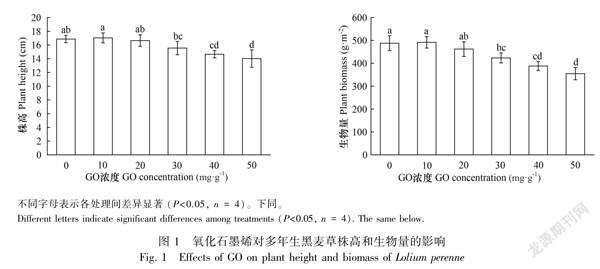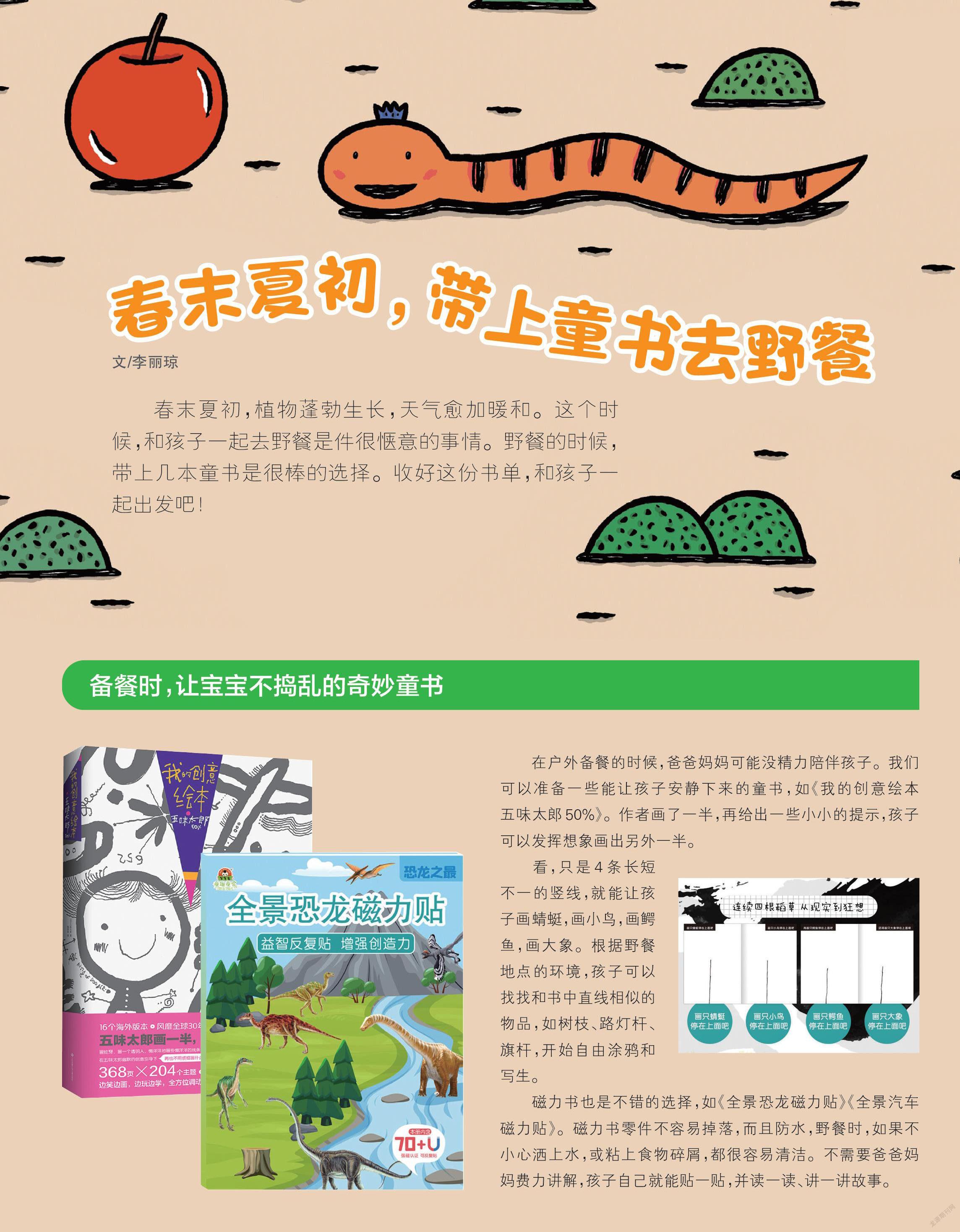


云和縣拥有500多年种植历史的云和雪梨松脆香甜,汁多味美,被授予“中华名果”称号。云和黑木耳已成为国家地理标志产品,而云和湖有机鱼则是继新安江有机鱼之后获国家环保总局认证的第二个有机鱼品种。
多年来,云和县重视对传统美食、乡土菜肴的传承,以本土食材制作形成“云味十二道”。云味菜肴天然环保,烹饪方法原始古朴,不仅深具云味特色、乡土气息,还代表了云和的独特文化和历史,成为一道不可或缺的风景。
Yunhes enchanting and mesmerizing landscape is not its only attraction. Its abundant agricultural produce enables the area to develop a rich culinary tradition, epitomized by the signature “Twelve Dishes of Yunhe”.
More than just taste, the “Twelve Dishes of Yunhe” offer a unique window through which to discover the local geography, culture and history.
仙宫湖有机鱼
Xiangong Lake Organic Fish
高峡出平湖,紧水滩大坝蓄水后形成了仙宫湖,仙宫湖常年水雾弥漫,且港汊众多,湖水清澈,溶氧丰富,水质达国家一类水标准,是全国第二个获得国家有机食品认证中心严格认证的有机鱼生产基地,拥有鲢鱼、刀鱼、君鱼、桂鱼、草鱼、青鱼、鳊鱼、鲶鱼、野生鳖、桃花鱼、黄刺鱼、淡水鲈鱼、黄尾巴鱼等100多种野生鱼资源。
仙宫湖有机鱼生态环保、味道鲜美,深受消费者欢迎,是“喝矿泉水长大”的有机鱼。其中,以花鲢鱼头烹制的“仙宫鱼头”是云和的传统名菜,味道鲜美、纯正,外地游客到云和,都会品尝仰慕已久的仙宫鱼头。
Silver carp, grass carp, herring, bream, catfish, freshwater bass, yellow tail fish…formed after the Jinshuitan Dam was built, Xiangong Lake is home to more than 100 native fishes, and the second organic fish breeding base certified by China Organic Food Certification Center.
The environment in and around the lake is well-protected, and the water quality is so high that the lakes organic fish are said to “have grown up drinking mineral water”. Xiangong Fish Head, cooked with the spotted silver carp head, is one of the best-known fish dishes in Yunhe, which is a must-eat for travelers.
咸萝卜煎蛋
Fried Duck Eggs with Pickled Radish
明朝期间,有石寨“穷光蛋”,吃饭的时候,碗里总有一个“空壳”咸鸭蛋。一日,有媒婆说亲,带女子上门。“穷光蛋”跟女子聊至午时,顺口留饭。但家里除了几棵青菜,别无他物。“穷光蛋”前思后想,去邻居家借两个鸭蛋,谁知好事多磨。回家的路上,“穷光蛋”不小心把鸭蛋打破了。他生出一计,把黑不溜秋的咸萝卜刴碎了跟鸭蛋打在一起,放到锅里一煎,一盘菜就烧成了。哪知那女子对这道菜竟赞不绝口!因咸萝卜形似人参,“穷光蛋”灵机一动,为他发明的“咸萝卜煎蛋”取名“黑人参煎蛋”,传至民间。
During the Ming (1368-1644) time, there once lived a poor lad in Shizhai village. When having meals, he would always put in his bowl an “empty” duck egg shell, in which he stuffed pickled radish. One day, a matchmaker dropped by, trying to introduce a young lady to the poor lad. They had a very pleasant talk, but when lunchtime came, he suddenly realized he had almost nothing to prepare for the guests. He went to the neighbors and at length borrowed two duck eggs, planning to boil them. But he broke the eggs! “Why not fry them then?” he thought. He took out strips of dark pickled radish from the “empty” shell, chopped and then fried the eggs with them, hoping it could pass muster. To his surprise, the lady not only liked it; she loved it! Then, another idea dawned on him. Seeing the resemblance between his dark pickled radish and the much-valued ginseng, he gave the newly invented food a much more glamorous name—“Fried Duck Eggs with Black Ginseng”, which later became a popular local dish.
乡村土猪脚
Braised Pig Trotters
古时,紧水滩镇大源村有一位美丽又勤劳的姑娘,她有一双巧手,房前屋后都种满了庄稼。但村后有大野猪,常窜至庄稼地糟蹋粮食。一日,邻村一位年轻的猎户在姑娘的庄稼地足足守了3个晚上,用猎枪打死了大野猪,还把大野猪送到了姑娘家。有媒婆撮合了猎户与姑娘的婚事。为了感谢媒婆,猎户和姑娘送给媒婆一只大大的野猪脚,还烧了一大锅野猪肉,请父老乡亲来分享。那以后,“给媒人送野猪脚”就成了村里的习俗。后来形成了“散猪福”,要是哪家哪户杀了猪,都会邀请亲朋好友、父老乡亲来“散猪福”,也叫“三猪福”,即吃猪血、猪小肠和猪肝。
In the olden days, there once lived a beautiful and hardworking girl in Dayuan village of Jinshuitan township, who had grown crops all around her house. But much to her annoyance, a wild boar often snuck around, foraging for food and causing a lot of damage. One day, a young hunter from the neighboring village volunteered to deal with the beast. He waited for three days and three nights before eventually killing it, and then presented its body to the girl. A certain matchmaker heard about the story and happily lent a hand. To thank the matchmaker, the hunter and the girl, who had by then married, gifted her with a big trotter from the boar, cooked the remainder and shared the meat with fellow villagers. Since then, it has become a custom to “send the matchmakers pig trotters”. And whichever household kills a pig will invite friends and fellow villagers to enjoy the meat, called “San Zhu Fu” or spreading happiness through pork.
酒糟黃瓜泥鳅
Stewed Mudfish with DistillersGrains and Cucumber
云和“九山半水半分田”,在长期的劳动生活中,人们因地制宜,烹制出“酒糟黄瓜泥鳅”这道人间美味。长期以来,云和民间就有自酿黄酒的习俗,自酿的黄酒以稻米、小麦等为主要原料,要经过蒸煮、加曲、糖化、发酵、压榨、过滤等一系列程序。而黄酒酿造产生的酒糟,含有丰富的氨基酸、维生素、蛋白质、脂肪等。而黄瓜,据《本草纲目》中记载,有清热、解渴、利水、消肿之功效。酒糟去泥鳅腥气,泥鳅的肉汁经过慢火炖焖,渗入黄瓜。酒糟香醇,黄瓜富含汁液、泥鳅鲜美滑腻,“酒糟黄瓜泥鳅”这道美食,历朝历代备受食客推崇。
For a long time, Yunhe people have been brewing their own yellow rice wine. The distillersgrains from the wine are rich in amino acids, vitamins, proteins, and fats. On the other hand, cucumber, according to the Compendium of Materia Medica,can clear internal heat and quench thirst, and have various other medicinal values. Combine the above two ingredients with mudfish, and stew them slowly until they are ready, you get the unique dish. Indeed, during the stewing process, the distillers grains can help remove the fishy smell from the mudfish, and the cucumber, seeped with the mudfish juice, is particularly munchy.
汀州白玉笋
Tingzhou “White Jade” Bamboo Shoots
明末清初,云和等地由于长期战乱,人口大量减少,当地官府鼓励外来人员落户垦荒。康熙至乾隆年间,福建长汀、上杭、宁化等县的汀州人大量迁至云和。其中的黄氏属于孟宗的老家江夏郡,唐末迁至福建汀州。
汀州人居住在紧水滩库区大源、赤石、库北及朱村一带,盛产竹笋,而雷笋色白如雪、松脆爽口、营养丰富,汀州人视其为山珍美味,封其“白玉笋”雅号。“白玉笋”是待客上品,若是在产笋期,主人会以鲜美的“白玉笋”招待客人。因鲜笋不易保存,汀州人便把吃不完的鲜笋制作成笋衣、笋干,“笋衣扑蛋”就是汀州人的一道美食。
At the end of Ming and the start of Qing (1616-1911), when dynastic change caused much turmoil, local population drastically decreased in Yunhe. Later, with the support of the local government, many people from Tingzhou (parts of present-day Sanming city and Longyan city in Fujian), relocated to Jinshuitan area in Yunhe.
To the delight of those Tingzhou people, there was an abundance of bamboos in the area. They loved eating the pearly bamboo shoots so much that they dubbed them “white jade”. To better savor the “white jade”, Tingzhou people would usually chop the shoots and dry them as strips or peel the shoots into thin layers and dry them, the latter of which would often be cooked together with scrambled eggs.
云和黑木耳
Yunhe Black Fungus
本世紀初,云和菇民郑云隆利用木制玩具的废弃木屑、边角料取代椴木培育黑木耳,成功研制出“代料黑木耳栽培技术”。云和黑木耳朵形美观、肉质厚、光泽、耐泡、脆嫩、味美、口感好、营养丰富,是国家地理标志保护产品,“代料黑木耳栽培技术”还通过千名“云和师傅”传播到各地,造福全国菇农。
In early 2000s, a local mushroom farmer by the name of Zheng Yunlong successfully developed a novel way of growing black fungus. Instead of basswood, Zheng, after many trials and tribulations, would cultivate the mushroom by using scrap wood left over from making wooden toys. The method proved to be not only equally effective, if not more, but more environmentally friendly and cost effective. Yunhe black fungus is now well known for its good taste and high nutritious values, and the new cultivation technique is also benefiting mushroom farmers all over China, thanks to the help of thousands of “Yunhe Masters”.
冰镇云和雪梨
Chilled Yunhe Snow Pear
相传,在很久以前,云和凤凰山脚住着一个心地善良的孤寡老婆婆,一年冬天,老婆婆救下一名差点冻死的老乞丐,带回家中每天都烧番薯汤送给老乞丐,老乞丐的病情慢慢地好了起来。老乞丐病好了后,要出去要饭了,为表谢意,送老婆婆一株树,以保其一辈子衣食无忧。他将手中打狗棒插在门前的空地上,手指一指,打狗棒立刻抽出枝条、生出叶子来了,结了许多碗口大的果子,味道香甜,皮薄肉嫩水分多,取名“神仙果”。有一年,云和城发生一种瘟疫,有病人吃了神仙果,病就好了,一场瘟疫就靠神仙果扑灭了。
神仙果好吃又可治病,从那以后,宫廷官府设宴,有钱人家请客,都少不了它。偌大的凤凰山前,很快变成了一个大果园。老婆婆的神仙果,就是中华名果——云和雪梨,同时也是国家地理标志保护产品。大果园就是云和著名的梨园,位于现在的梨园路一带。
Long long ago, there once lived a kind-hearted granny at the foot of the Phoenix Mountain in Yunhe. One winter, she chanced upon an old beggar who was almost freezing to death. The granny brought him home immediately and then cooked sweet potato soup for him every day. Overtime, the old beggar recovered. To show his gratitude, he gave the granny a tree. With just one click of his fingers, branches suddenly grew and leaves sprouted out, fruit as big as a bowl already dangling all over the tree. Called “Fruit of the Immortal”, it was not only sweet in taste and tender in flesh;it could also cure diseases. By now, you may have already guessed:
this magic fruit is in fact the famed Yunhe snow pear.
风肉炒蒲瓜干
Air-dried Salty Meat Stir-fried with Dried Calabash Strips
蒲瓜,民间称“蒲儿”,又称“葫芦”,是旧时农村最为司空见惯的瓜类蔬菜,具有清心热、润心肺、除烦渴、利小肠、利水消肿、通淋散结等功效。亦可将新鲜蒲瓜去皮洗净,切成薄片,晾在筛子上,放在阳光下照晒,或在通风处晾干,薄如蝉翼的“蒲瓜干”便做成了。云和农村过年时还有做“风吹肉”的习俗,风一吹,便会散发出丝丝的香味,“风吹肉”的制作比较简单,只要把盐抹在切成条块状的新鲜肉上,用酱油浸泡一个晚上,挂在自家屋檐下风干,三五日即可。云和人将这两样食材合在一起,成为“风吹肉炒蒲瓜干”,既入味,又爽口,吃起来还“笃笃”作响,是云和人和外来客人的最爱。
Calabash, or gourd, is one of the most commonly consumed vegetables in the rural area, which is believed to have a number of therapeutic values. Yunhe people would often peel the gourd and slice it into thin pieces before sun-dry or air-dry them. They then stir-fry the dried pieces with air-dried salty meat, making it another signature dish in the local cuisine.
风炉豆腐肉
Meat Pot with Salted Tofu
赤石一带临瓯江,一到秋冬,天气湿冷,民间有围炉吃饭的习惯。人们把盐卤豆腐、土猪肉和一些香料放在锅里,加些水,置于燃着炭火的风炉之上。煮沸后,锅里散发出扑鼻的肉香和豆腐香。由于盐卤豆腐和土猪肉的硬度、弹性、韧性都较强,越煮越有嚼劲,而且越煮越香,十分诱人。
Close to the Oujiang River, Chishi area is often quite damp and cold during autumn and winter, and people here have long had a habit of enjoying their meals by the fireside. One of the main courses is the meat pot with salted tofu. Usually placed on top of a charcoal stove, the pot is stuffed with salted tofu, pork and condiments, as well as water. When the water boils, the delectables from the pot would make anyone salivate.
牛奶藤柴火鸡
Braised Chicken with Wax-leaved Climber
牛奶有广泛的药用价值,它可以祛风散寒,除湿通络,消肿止痛,去火解毒,用于治疗腰痛、腹痛、骨折、痈疮、水肿、癣疥,果实还具有滋阴、补阳、强心作用。云和人在烧制鸡时,都要在土锅里加一把牛奶藤,用柴火慢慢熬制,用以祛风散寒,去火解毒,滋补身子。
Wax-leaved climbers are believed to have a variety of medicinal values. Thats why when cooking chicken, people in Yunhe always prefer to put a handful of the plant into the braising pot, and then let it simmer for some time before the meat is tender enough and ready.
云河溪螺
Yunhe River Snail
相傳,南宋时石浦村有对年轻夫妻,十分恩爱。婚后不久,丈夫就要运送一批陶瓷到温州,妻子依依不舍。半月后,估摸着朝思暮想的丈夫就要回来了,妻子就到瓯江摸了一大盆螺蛳,生起灶火,洗净铁锅,倒入一汤匙的茶油,再倒入早早备好的一大盆螺蛳,撒一小把盐、几只花椒,用铁瓢窸窸窣窣地炒几下,再向锅里倒入一瓢水,然后盖上锅盖……
妻子来到埠头,丈夫刚上岸。俗话说小别胜新婚,小两口说说笑笑地回家了。“哎呀,瞧我这记性,锅里还烧着螺蛳呢。”当妻子打开锅盖时,却有一阵特别的香味扑鼻而来,定睛一看,锅里的水已经干了,每个螺蛳上都结着一层白白的盐霜!用竹签挑了螺蛳——咀嚼,万万没想到,这螺蛳肉居然十分松脆、入味、可口,简直就是下酒的上品!因为思夫心切,妻子歪打正着,发现了螺蛳的新吃法。惊喜之余,夫妻俩把这种方法烹制的螺蛳称为“望夫螺”,最终成就一道美食——椒盐螺蛳。
During the Southern Song dynasty (1127-1279), a young and loving couple once lived in Shipu village. One day, not long after their marriage, the husband had to deliver a batch of ceramics to Wenzhou. Half a month later, when he came back, the anxious wife had long waited at the pier. As the saying goes, “absence makes the heart grow fonder”, and the couple happily made their way home.“Oh my!” the wife suddenly exclaimed, “I forgot I was cooking and the wok is still on the stove.” It turned out she had gone to the Oujiang River earlier that day and caught a basin of river snails; she put a spoonful of tea seed oil, fried the river snails with Sichuan pepper and then poured some water into the wok, preparing to feast her husband.
Expecting burned meat all over the place, they were overjoyed to smell a special aroma. While the water just dried up, each river snail was covered with salt frost, the meat very crisp and delicious! They even named it the “Waiting-for-Husband River Snail”, and this is how the dish—river snail with salt and pepper—came about.
麻叶粿
Ramie Leaf Rice Cake
开春之后,山区农民就会摘取新鲜嫩苎叶,与糯米饭一起放在石臼中捣烂,均匀搓揉,形成青翠欲滴的饭团,放在蒸笼中蒸熟。这是最常见的麻叶粿,蒸熟后还是绿的,很有嚼劲。也可以把饭团擀成薄皮,油炸后金黄酥脆、清香甘润。薄皮还可以包上馅,蒸熟后就成了绿色的蒸饺。麻叶粿是纯手工制作的天然食品,从采麻叶到成品上桌,整个过程就像小孩玩“过家家”,充满了童趣,原始浓郁的乡土气息备受人们的喜爱。现在,制作麻葉粿成了云和梯田景区的特色农耕体验项目,吸引了不少游客。
Fresh ramie leaves are harvested beginning from early spring every year, which are then cleaned and ground together with gluttonous rice, before being kneaded into dough balls of lush green and steamed. Other ways of preparing ramie leaf rice cakes include deep-frying the dough after rolling the balls into thin layers and stuffing the cake like dumplings. Now making the rice cakes has become a popular way for tourists to experience authentic local customs.
(本栏目图片由云和县委宣传部提供)
猜你喜欢 酒糟螺蛳黑木耳 如何清洗螺蛳食品与生活(2019年4期)2019-05-13机关风靡黑木耳新民周刊(2019年15期)2019-04-24黑木耳成为扎赉特旗农民致富新产业新农村(2018年12期)2018-08-24酒糟育肥肉牛的技术要点及注意事项现代畜牧科技(2018年4期)2018-05-14吸螺蛳有学问少年文艺·我爱写作文(2018年4期)2018-05-02螺蛳味鲜美,吃前需知晓家庭用药(2017年5期)2017-05-26鸡舍垫料用酒糟好当代生意经(2015年3期)2015-10-21巧用酒糟喂鹅农村农业农民·B版(2015年9期)2015-10-16黑木耳读写算·小学低年级(2009年12期)2009-12-28蝌蚪、螺蛳、水草和海马小学生·多元智能大王(2009年11期)2009-12-07





